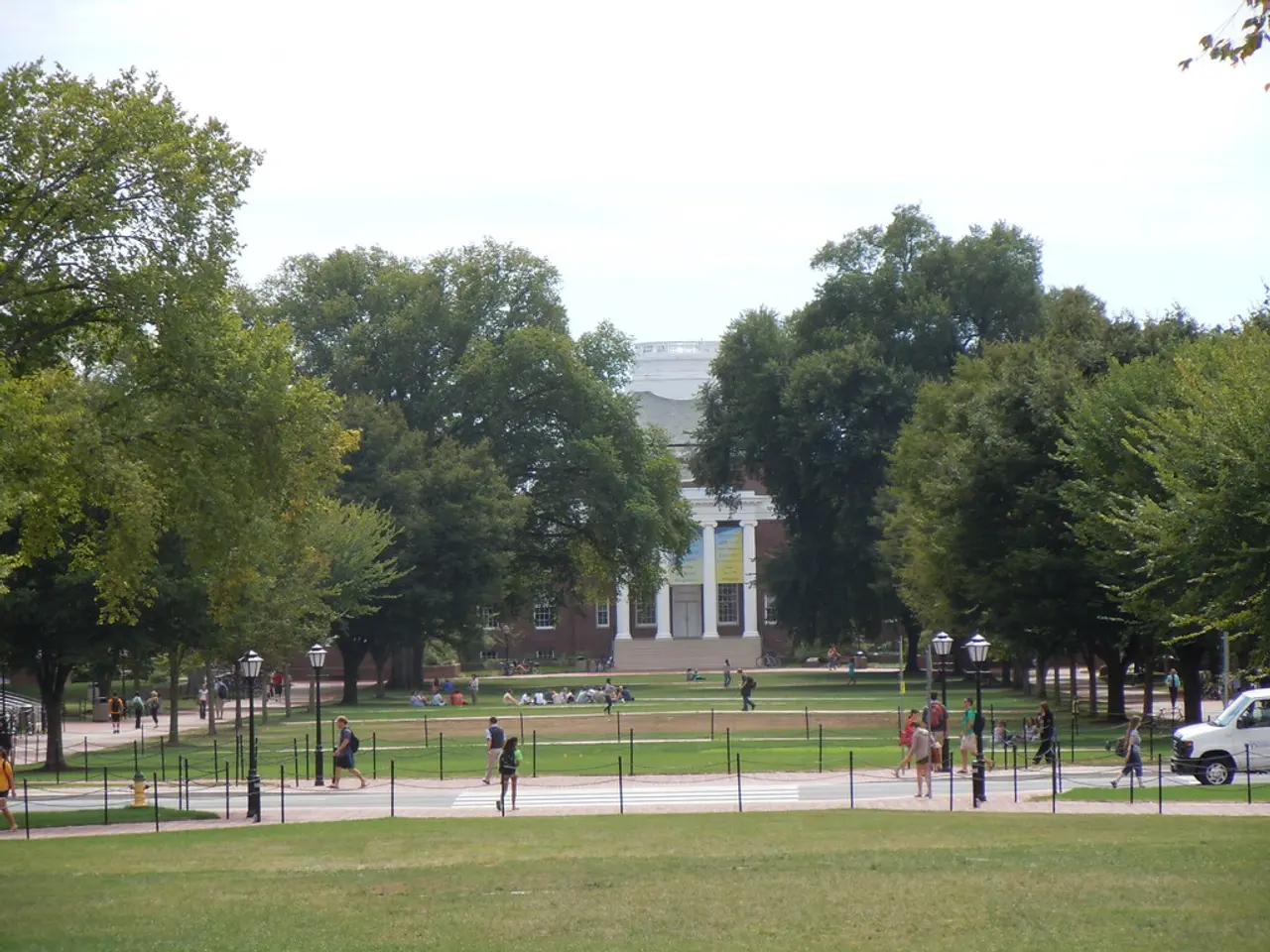Possible shift in trade policies could potentially speed up the transition towards a circular economic model.
In a move that could potentially accelerate the transition to a more circular economy in the United States, President Trump's tariff policy, particularly the 50% tariff on copper imports, is creating incentives for domestic recycling and processing of copper scrap.
The circular economy, a concept defined by the Ellen MacArthur Foundation, focuses on keeping products and materials in circulation through processes like maintenance, reuse, refurbishment, remanufacture, recycling, and composting. David Linich, sustainability principal at PwC U.S, believes that this tariff could strategically benefit businesses by avoiding tariff exposure, sparking innovation, reducing operating costs, and driving long-term growth.
The tariff, which excludes scrap copper, makes recycled copper more competitive and attractive. This has the potential to increase recycling rates and investment in processing facilities for scrap copper within the U.S., supporting growth in the recycling industry. Domestic mining companies may also benefit and expand production, but since U.S. mines only meet about half of copper demand, recycling is key to closing the supply gap.
By promoting domestic sourcing of copper—including recycled materials—the policy could help reduce reliance on international supply chains, aligning with circular economy principles emphasizing resource efficiency and local loops. This dynamic might pressure international producers to invest in U.S.-based processing, further strengthening domestic circular materials flows.
However, these tariffs also raise costs for manufacturing sectors dependent on copper, such as electronics, construction, electric vehicles, and renewable energy sectors. If prices rise too much or if supply chains are disrupted, this could slow some clean energy transitions. Overall, while tariffs potentially foster circular economy practices in copper use by making recycling more economically attractive domestically, they pose challenges for affordability and competitiveness.
Meanwhile, sustainability expert Vishal Agrawal from Georgetown University suggests that the best thing for sustainability is incentivizing customers to keep products longer, as most of the environmental impact comes from the production and disposal of products. Firms could respond to tariffs by using less materials, being more efficient when they design the product, or designing it to be more longer lasting.
The push towards the circular economy could require a lot of change in consumer behavior, as well as huge investments in infrastructure, collection, recycling, reuse, and so on. However, advances in artificial intelligence and robotics will lead to improved sorting and reuse from waste streams, helping to manage these challenges.
Moreover, consumers are increasingly expecting more sustainable products and packaging, and many businesses are setting targets around the amount of reused or recycled materials in their products. The PwC's Second Annual State of Decarbonization report shows 37% of companies are increasing their ambitions around sustainability, while only 16% are dialing back their sustainability ambitions.
Several states in the U.S have extended producer responsibility laws that are helping to fund new waste infrastructure. The impacts on reuse, a cornerstone of the circular economy, could be more interesting, particularly in sectors like domestic appliances and electronics, where tariffs could have a big impact. Consumers might hold onto products for longer due to tariffs, leading to more prolonged use of certain products.
However, raw materials in electric waste, like cobalt and copper, are expensive and increasingly harder to source. This underscores the need for a circular economy approach, where waste is minimized and materials are kept in use for as long as possible.
In conclusion, while Trump's copper tariff policy could indirectly accelerate a circular economy shift by boosting domestic copper recycling and reuse infrastructure, it carries trade-offs that must be carefully managed. The move towards a circular economy requires a lot of change in consumer behavior, as well as huge investments in infrastructure, collection, recycling, reuse, and so on. But with the right strategies and investments, the circular economy could offer significant benefits for the environment, economy, and society.
[1] Source: Ellen MacArthur Foundation [3] Source: PwC's Second Annual State of Decarbonization Report
- The tariff policy, particularly the 50% tariff on copper imports, could inadvertently stimulate investment in technology that advances environmental-science, such as improved sorting and reuse from waste streams, due to increased demand for domestic recycling and processing of copper scrap.
- As the circular economy gains traction, sustainability-education and self-development will be crucial for businesses and consumers to fully grasp the potential benefits, including cost savings through improved resource efficiency, and for them to make informed decisions that support long-term growth and environmental sustainability.




